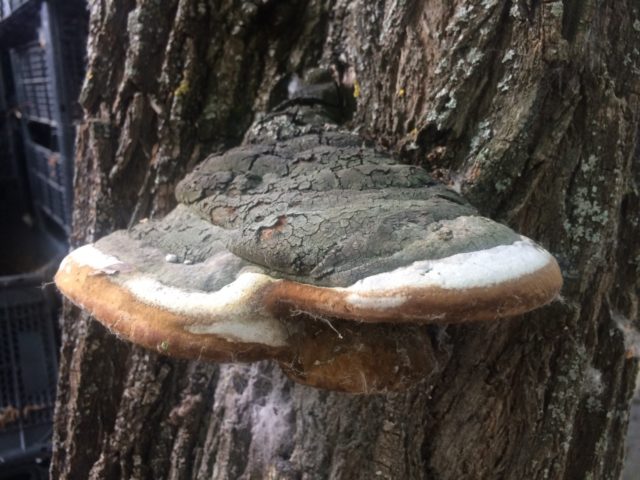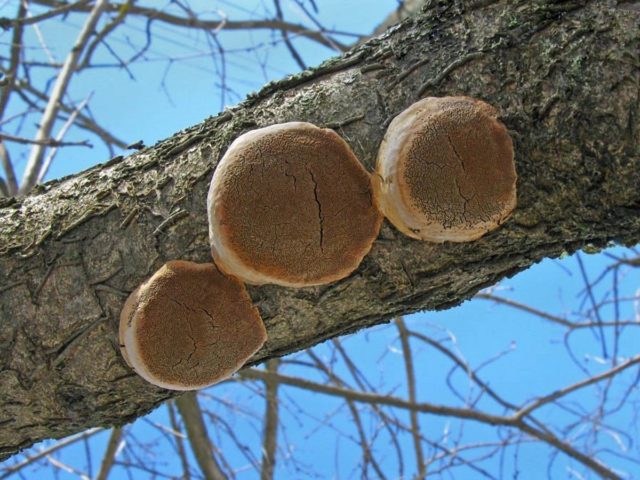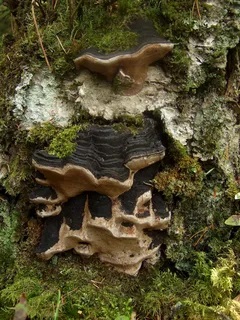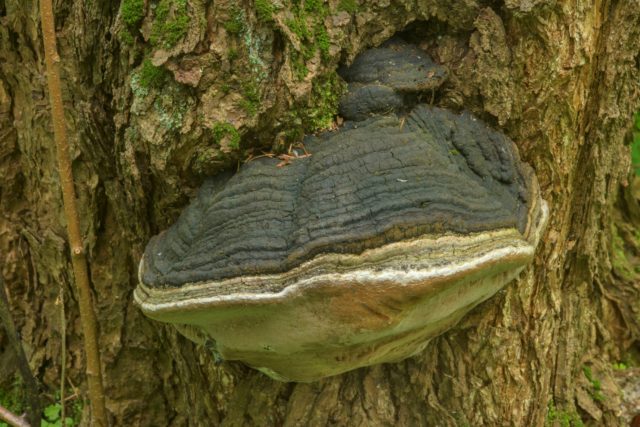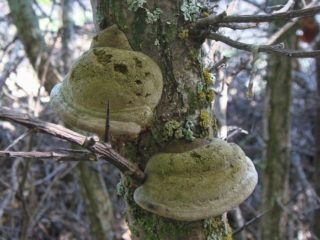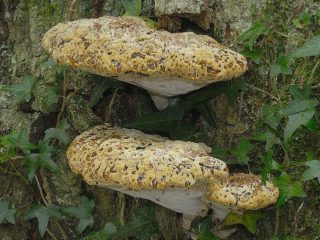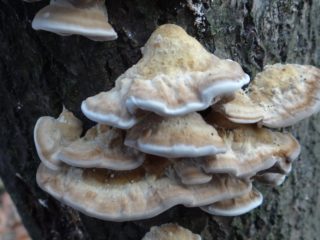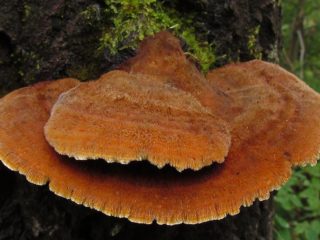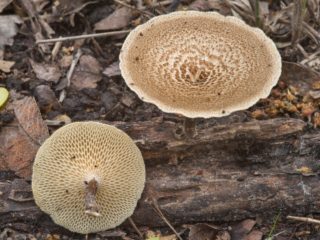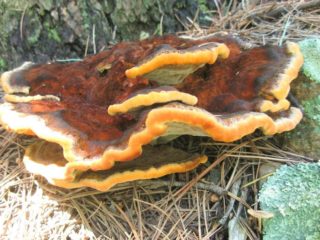Content
Phellinus burnt, also known as the false burnt tinder fungus, is a representative of the Hymenochaetae family, genus Phellinus. In common parlance it received the name – tree mushroom. Outwardly, it resembles a cork, and, as a rule, is located on damaged areas of dead or living wood, thereby causing colossal damage to trees.
Description of the false burnt polypore
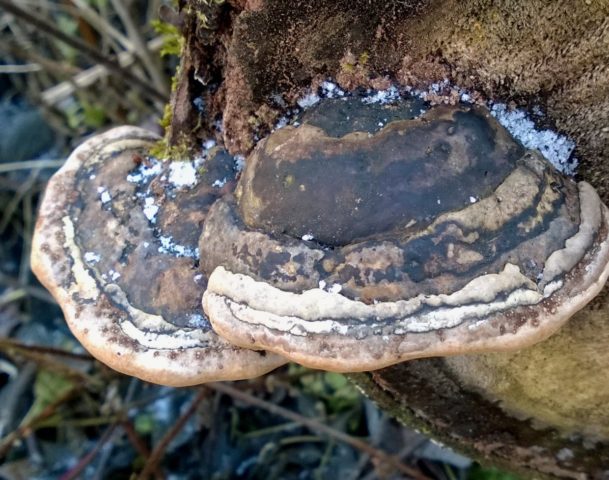
This species causes rot on wood
The fruiting bodies are sessile, woody, hard and perennial. At a young age they are cushion-shaped, but over time they acquire a prostrate, hoof-shaped or cantilever shape. Their size varies from 5 to 20 cm in diameter, in some cases it can reach up to 40 cm.They are perennial and can live up to 40–50 years due to the strength of the fruiting bodies. The surface of the burnt tinder fungus is uneven, matte, at the initial stage of maturation it is velvety to the touch, and becomes bare with age. The edge is rounded, thick and roll-shaped. The color of young fruiting bodies is usually reddish or brown with a grayish fluff; with age it becomes dark brown or black with obvious cracks. The fabric is heavy, hard, brown in color, and as it matures it becomes woody and black.
The hymenophore consists of small tubes (2-7 mm) and round pores with a density of 4-6 pieces per mm. The color of the tubular layer changes depending on the time of year. So, in summer it is painted a rusty brown color, in winter it becomes faded to a light gray or ocher shade. In the spring, new tubes begin to grow, so the hymenophore gradually turns rusty-brown in color.
Placed on a horizontal substrate, for example, on stumps, this specimen takes on the most unusual shape
The spores are non-amyloid, smooth, almost spherical. The spore powder is white.
Where and how does it grow
Phellinus burnt is one of the most common species of the genus Phellinus. Most often found in Europe and Russia. As a rule, it grows on drying and living deciduous trees, and also settles on stumps, dead wood or fallen trees. Found both singly and in groups. Fellinus burnt can grow on the same tree along with other types of polypores. When settling on wood it causes white rot. In addition to forest areas, tinder fungus can be found on a personal plot or park.Active fruiting occurs from May to November, but can be found throughout the year. This species grows on apple, aspen and poplar.
Is the mushroom edible or not?
The species in question is inedible. Due to its hard pulp, it is not suitable for cooking.
Doubles and their differences
Due to its unique shape, it is quite difficult to confuse Phellinus burnt with other tinder fungi. However, there are several representatives that have external similarities with the species in question:
- Plum tinder fungus. The fruit body is small in size, of various shapes - from prostrate to hoof-shaped. Quite often it forms diverse clusters. A distinctive feature is the location, since the double prefers to settle on trees of the Rosaceae family, in particular on plum. Not edible.
- False blackish tinder fungus – inedible. In most cases it lives on birch, less often on alder, oak, and rowan. Differs from the species in question in the smallest spore size.
- False aspen polypore belongs to the category of inedible mushrooms. It grows exclusively on aspens, and in rare cases on some varieties of poplar. Quite rarely it takes on a hoof-like shape, which is a distinctive feature from burnt Phellinus.
Conclusion
Fellinus burnt is a parasitic fungus that lives on various deciduous trees.Despite the fact that this species is not suitable for human consumption, it is used for medicinal purposes, in particular in traditional Chinese medicine.
